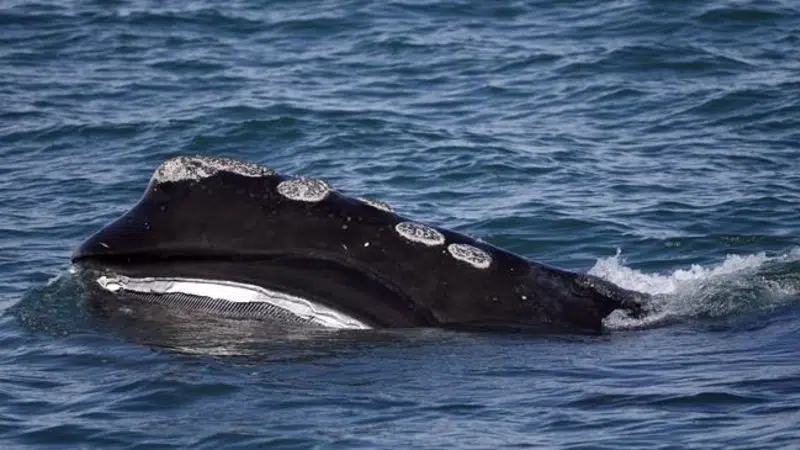
One of three entangled North Atlantic right whales may be on its way to freedom
One of the endangered, entangled North Atlantic right whales is partially free.
The Department of Fisheries and Oceans said in a news release that on Thursday, “for the first time in several days,” the weather conditions were favourable for searching and attempting to rescue the three North Atlantic right whales that were entangled in the Gulf of St. Lawrence, off Miscou Island, New Brunswick.
The department said the whale known as number 4423 was seen during a surveillance flight by the US National Oceanic and Atmospheric Administration around 10 a.m., and the Campobello Whale Rescue Team then began disentanglement operations, successfully removing gear that was keeping the whale from using its tail when diving.
Attempts to remove additional gear had to be paused when it got dark.


